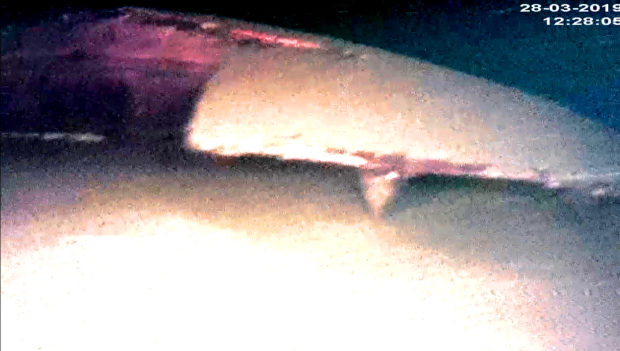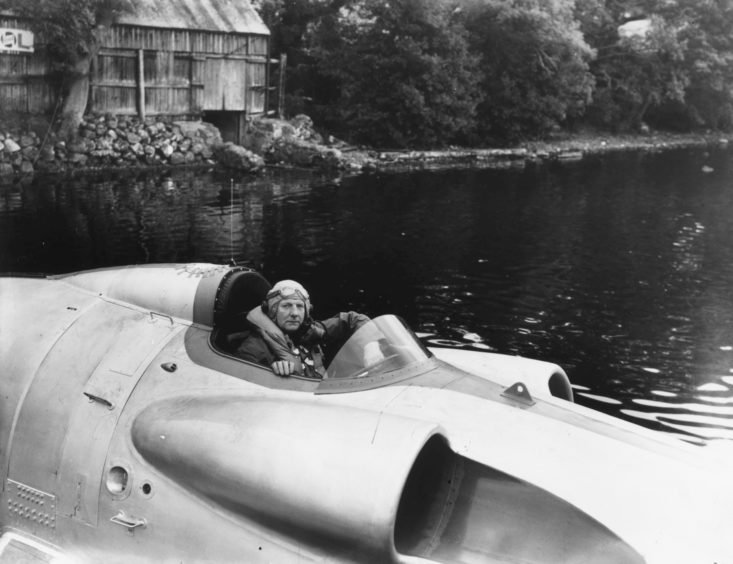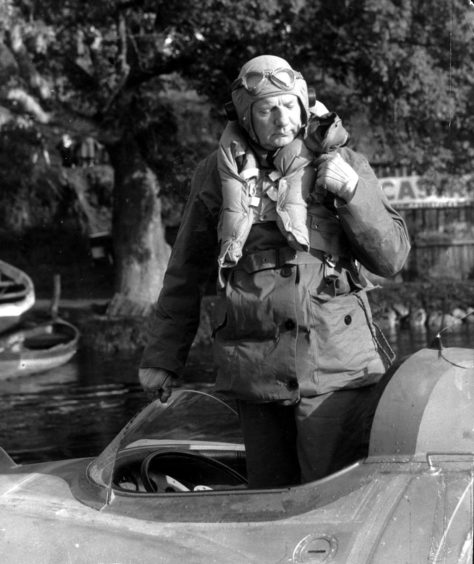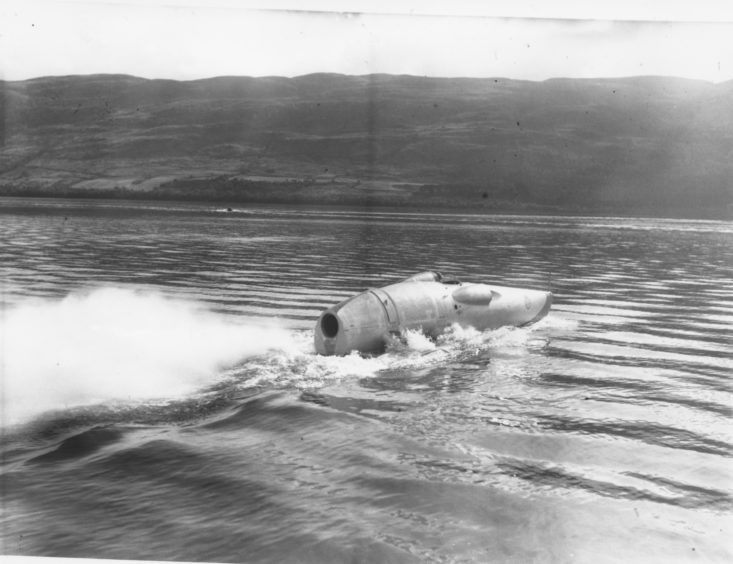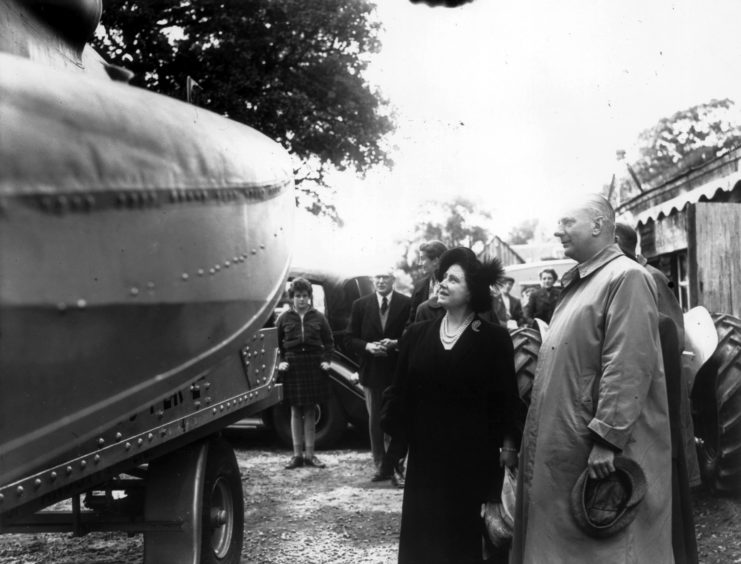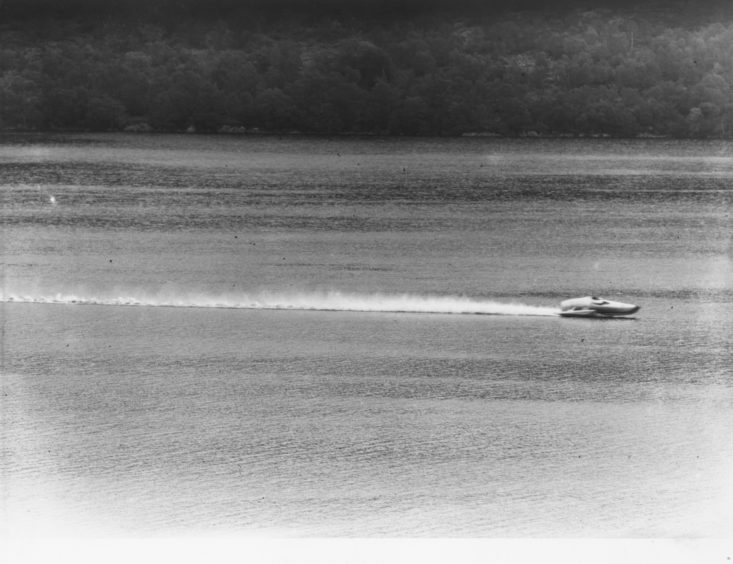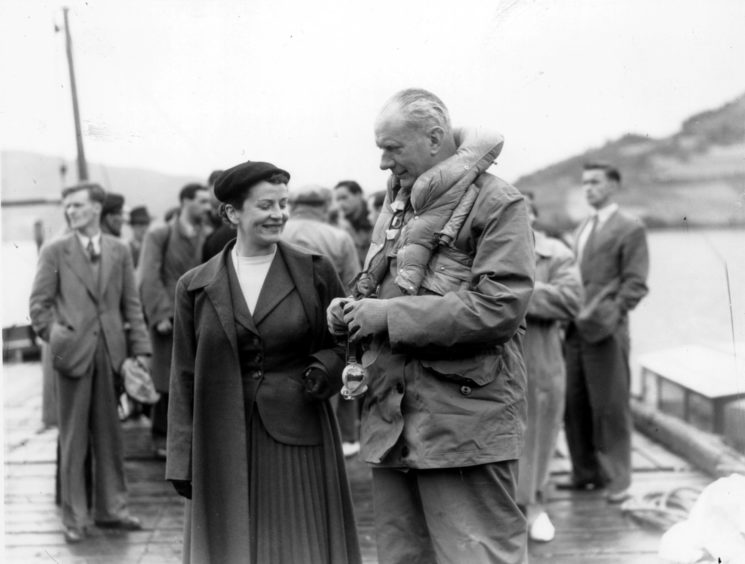The discovery of the boat used in a tragic speed record attempt on Loch Ness has brought to an end a “17-year quest” by experts.
Dramatic underwater footage has emerged of the jet-boat Crusader, used by John Cobb in his tragic world record attempt 67 years ago.
Mr Cobb was in the midst of attempting to break the world water record when disaster struck on September 29, 1952.
The Crusader hit a wake and crashed, killing Mr Cobb in the process.
His body was discovered on the surface, but only small fragments of the vessel were recovered, with the main body sinking to the depths of Loch Ness.
The discovery of the impressively intact hull was made by the production crew of a new instalment to the National Geographic Drain the Oceans TV series.
The team, in collaboration with Kongsberg Maritime and the Loch Ness Project, used the latest robotic technology to scan the depths of the famed stretch of water, to produce the highest resolution and accurate sonar readings ever undertaken on Loch Ness.
During the scan, the wreckage of the Crusader was established with a remote-operated vehicle sent to explore further the anomaly.
Now, footage has revealed the first underwater images of the craft.
Adrian Shine of the Loch Ness Project said: “Back in 2002 we found bits of aluminium but we did not find an engine, so really we had unfinished business.
“The discovery is certainly of national significance. This really did bring an end a 17-year-old quest for us.
“John Cobb was a national hero as the holder of the land speed record and he went down very well in Drumnadrochit, where he refrained from running on Sunday’s.
“It is one of those bittersweet moments. We have succeeded in what we set out to do but it is then you realise you are looking at a tragedy, and that was not lost on us.
“I was highly surprised to see how intact the vessel was.”
Historic Environment Scotland has been notified of the discovery, however, a spokesman stated they have no plans to raise the wreck, which was designated as a nationally important scheduled monument in 2005.
Bill Smith of the Bluebird Project, who have extensively restored one of the crafts used by once world record holder and fellow daredevil Donald Campbell, said yesterday that the project team are not actively pursuing the opportunity to restore the crusader, but would be interested should they be approached.
He said: “Certainly if somebody came to us and asked us to salvage and restore the Crusader then yes, we would be interested in getting it done. It would be a privilege.
“But it is not anything to do with us. If we were to get involved it would have to be in a similar method to the Bluebird Project whereby we were invited and are merely the instruments at the disposal of the Campbell family.”
